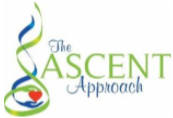A New Framework for Working with Couples in Recovery from Substance Use Disorders: The ASCENT Approach
By Jake Brennan
The ASCENT Approach is a therapeutic framework that was developed by Dr. Jeremy Frank and Chantal Jauvin. The approach focuses on couples in recovery from substance use and drug and alcohol addiction. Whether one or both partners were using or drinking, the ASCENT Approach views recovery as a collaborative process.
The main drive of this approach is that: for a relationship to heal and grow after the trauma of addiction, both partners must be involved in the work of healing and growth. Rather than identifying “the sick partner” who is getting sober as the person that needs to change, the ASCENT Approach recognizes that:
- Addiction impacts both couples.
- Both the couples need to do work to move forward.
- The relationship itself needs to become the priority and the thing to work on instead of one person’s addiction being the sole focus.
The ASCENT Approach comprises six main areas, meant to be addressed together rather than one at a time.
- A: Assess Your Readiness to Change
- S: Structure Your Time
- C: Create Your Community
- E: Engage in Your Life
- N: Nature Your Spirituality
- T: Treasure Your Partnership
The ASCENT approach is not a roadmap for how to do couples therapy. It is more of a holistic reflection on what couples need to help them heal and grow after addiction. The transtheoretical, evidence-based concept, stages of change are embedded throughout the ASCENT Approach.
There is perpetual work to undertake in recognizing the needs as partners in a relationship. If a couple is not ready to address something, this acknowledgment is part of the process. When they are ready, they can collaborate on how to address it. The idea is that healthy relationships require maintenance, and the ASCENT Approach offers a vision of what some of this maintenance work looks like.

A: Assess Your Readiness to Change
This is a two-part process. First, couples identify what the are the areas that they need to work on. This could be a joint area, like sex and intimacy, or doing more activities together. It could also be one person recognizing they need to follow through on something, like gardening or individual therapy, as a solo activity that will ultimately help that person be able to show up the way they want to in the relationship.
The second part is figuring out how ready the couple is to address each issue. For example, the couple might recognize sex as an issue to work on, but might also agree that they are not yet ready to be intimate. Acknowledging how ready we are to work on something relieves pressure to “hurry up and get better.” It also opens the possibility to work on something in small steps. For instance, we’re not ready to have sex right now, but we’d be willing to talk to a sex therapist together.
S: Structure Your Time
Here, couples make plans together and separately. This helps “talk” turn into action. It also helps promote accountability, both at the individual level and together. Having structured time promotes transparency, which can help rebuild ruptured trust from addiction. It creates opportunities for couples to plan together and share and see more of their partner’s interests.
Dr. Frank notes, “it also provides couples with some simpler problems to solve in the early stages of recovery. For example, it may be easier to have conversations about planning date nights and how to divide and conquer driving the kids around while attending to work, exercise, and hobby routines than it is to tackle issues like whether to buy a new house, switch careers or address unacknowledged feelings of betrayal, trauma or sexual intimacy. Those conversations may be more appropriate as the couple becomes more ready in later recovery.”
C: Create Your Community
A fundamental step in addiction recovery is recognizing you don’t have to do it alone. Both partners need to have people they can rely on, talk to, have fun, and practice healthy boundaries at the individual level.
Addiction can leave one partner in an unhealthy relationship with a substance and the other isolated from that relationship. When both partners use, the substances become a necessary mediator that makes the relationship possible.
Creating community as a couple in recovery allows them to open up rather than wall off and strengthen connections rather than cut them off. Creating community involves examining the community social supports consisting of family, friends, partners, and other social opportunities for both the individual and the couple together. Additionally, it consists of identifying ways to build community and social support that might benefit couple recovery.
E: Engage in Your Life
The biggest myth of addiction is that everything will get better by simply stopping the drug use, drinking, gambling, or whatever else the problem is. What “stopping” does is free people up to address their needs in healthier ways that promote growth. Here, the couple takes responsibility for what they need, want, and desire. They start to do more both on their own and together. They find ways to live their values.
Dr. Frank points out, “There is an expression among recovering communities that, ‘We used to live and we lived to use.’ Isn’t one of the main reasons to seek recovery- to reduce or stop substances- so that people can better engage in their lives? It is a far more enticing incentive to consider what is gained from sobriety or recovery than to wallow in or grieve what may be lost in giving up a dependence on substances.”
N: Nurture Your Spirituality
This part of The ASCENT Approach most resembles traditional 12-step work. However, it does not require finding a higher power. Spirituality is shifting from being the center of our universe to understanding ourselves as a part of something larger. What “something larger” is, is for personal definition.
Addiction leads to isolation, either literally being alone or being inaccessible even when with others. Couples can find ways to cultivate inner peace together or encourage one another in their individual pursuits of spirituality.
Regardless of being religious, agnostic, or atheist, there are many ways one can explore spirituality. Outside of religion, some find it through yoga and mindfulness. Others find spirituality through nature, walking, hiking, exercise, artistic endeavors, reading, creativity, or other hobbies.
T: Treasure Your Partnership
In active addiction, the relationship between a couple is often strained and taken for granted. In recovery, there is an opportunity for the opposite to occur. The relationship becomes something to foster, nurture, value, and express gratitude for.
Individually, each partner may reflect on why they love their relationship. Together, partners can express gratitude, complement each other, and make plans to honor what they create by uniting as a couple. This could be anything from taking a longed-for trip together to making time to sit and hold hands while watching a movie. It may also involve investing time and money into couples, individual, and family therapy.

The ASCENT Approach As a Framework
The ASCENT Approach is not itself an evidenced-based addiction recovery practice, but as a framework, it draws directly from evidenced-based modalities. The six outlined aspects are not meant to be completed following the other. They are fluid and complement each other, and require regular maintenance. A healthy couple will likely embody all six aspects of this approach, whether they are in treatment or not.
Addiction Treatment is Not One-Size-Fits-All
Addiction and recovery work requires a multi-modal approach. Working on deep issues from a psychodynamic lens may help get to core emotional issues that drive addiction. Some Rational Emotive Behavioral Therapy (REBT) skills-work might also be needed initially to create stability and improve daily functioning enough to tolerate more profound work. Twelve-step or other recovery-oriented meetings are also some recommendations to supplement extra support.
Getting a gym membership, buying a bike, or joining a walking club can all be fundamental aspects of early recovery work. The ASCENT Approach honors that addiction treatment cannot be one-size-fits-all. Further, it recognizes the need for both partners in a relationship to do the work. The ultimate aim is for couples to engage in the work together, and with practice, to find joy in doing the work.
Read More About The ASCENT Approach
JFA produced a series of articles on our blog that explore each component of The ASCENT Approach in greater detail. We encourage anyone interested in this approach to check out these articles to better understand the practices of the approach.











